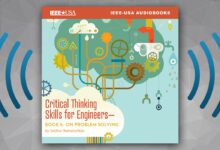
Lifetime partnerships most influenced the commercial success of creative genius, Thomas Edison. According to author Harry T. Roman, Edison’s relationships with others both influenced and invigorated the great inventor. In Volume 2 of the series–Thomas Edison — Man of the Millennium—Vol. 2: Lifetime Partnerships–Roman postulates that not only Edison’s fellow inventors and technicians in the lab; but also his mother and his second wife were fundamental to Edison’s creative growth and business success.
In this most interesting second volume, Roman describes how Nancy Elliot Edison, a trained teacher, literally rescued her son. She began homeschooling him after a teacher told her the boy was “addled” and “incapable of learning.” Besides instilling discipline in him, his mother also encouraged young Edison to read. He soon became an avid reader of everything – from the classics to history, science and poetry. Edison’s passion for reading became a lifelong passion.
“Edison’s love of reading and learning would be crucial to his success in later years,” wrote Roman
Roman also describes in detail, the male camaraderie in Edison’s workshop. Late, and sometimes, overnight sessions with his staff (what Roman refers to as “the cozy boys’ club at the lab”) fueled Edison’s inventive and creative genius. The men’s’ antics included sharing pranks, knee-slapping stories and midnight meals – and Edison heartily participated. At the same time, the group’s comradeship fostered teamwork. Together, Edison and his team created exciting, new inventions.
“Viscerally, Edison grasped the importance of creativity, the need to nurture it, and most importantly, to step back from it when necessary,” Roman writes. “Today’s R&D executives may not approve of such behavior in the labs, as high-priced scientists and engineers might engage in what would appear to some to be sophomoric tomfoolery.” However, Roman, who spent 36 years in research and development at PSE&G, noted, “Research project managers everywhere would give their right arms to be able to instill in their staffs what Edison did in his!”
The author also devotes a chapter to Edison’s second wife, Mina Miller Edison. Roman praises Mina Edison for being an effective business partner, as well as a loving wife. Unlike Edison’s first wife, Mary, who died, Mina was educated, socially confident, and had many interests of her own. She was crucial in ensuring her husband had the privacy he needed to keep working and inventing. She also tended to his social calendar; and managed visiting United States presidents, kings, and other important guests, to their estate. Another of Mina’s roles was Edison R&D’s de facto public relations department.
“Thomas and Mina’s marriage was a loving partnership, even if he was often away from home for days at a time,” writes Roman.
A fan of Thomas Edison for most of his life, Harry Roman was a child when the inventor first inspired him. Since retiring from PSE&G in 2006, the IEEE Senior Member has spent much of his time working at the Thomas Edson National Historic Park in West Orange, and with the Edison Innovation Foundation. His volunteer work at these two places has enabled Roman to gain access to original Edison writing, artifacts and lab notebooks.
Beginning 1 October through 15 November, IEEE members can download this e-book free!
Just go to: https://ieeeusa.org/shop/views/edison-vol-2/; sign in with your IEEE Web Account; add the book to your cart; and enter promo code OCTFREE19 at checkout.
Don’t miss this free opportunity – this e-book is normally $2.99 for members ($4.99 for non-members).
Continue your exploration of Thomas Edison’s life, today!
Georgia C. Stelluto is IEEE-USA’s Publishing Manager; Manager/Editor of IEEE-USA E-BOOKS; InFocus Department Editor for IEEE-USA InSight; and Co-Editor of the IEEE-USA Conference Brief.






